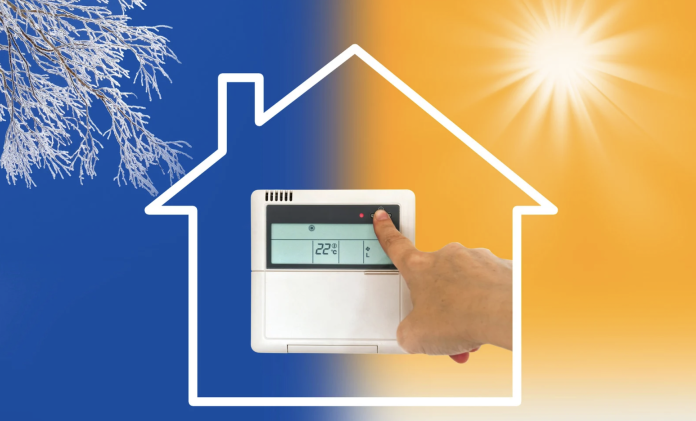Evaporative cooling, also known as swamp cooling, is a cost-effective and energy-efficient way to cool indoor spaces, especially in dry climates. Unlike traditional air conditioning systems that use refrigerants to cool the air, evaporative coolers use the natural process of water evaporation to reduce air temperature. While this method offers several advantages, such as lower energy consumption and environmental benefits, it is not without its drawbacks. One common concern is, “Can evaporative cooling make you sick?” In this blog, we will explore the potential side effects of evaporative cooling, its impact on health, and ways to mitigate any adverse effects.
How Evaporative Cooling Works
Before delving into the side effects, it’s essential to understand how evaporative cooling works. An evaporative cooler consists of a fan, water reservoir, and cooling pads. The fan draws warm air from outside through the moist cooling pads, where water evaporates and absorbs heat from the air. The cooler air is then circulated into the indoor space, lowering the overall temperature. This process is highly effective in arid regions where the relative humidity is low.
Advantages of Evaporative Cooling
Cost-Effective
Evaporative coolers are generally less expensive to purchase and operate compared to traditional air conditioning units. They consume less electricity, which can lead to significant savings on energy bills.
Environmentally Friendly
Unlike conventional air conditioners that use chemical refrigerants, evaporative coolers rely on water for cooling. This reduces the emission of greenhouse gases and minimizes the environmental impact.
Humidification
In dry climates, evaporative coolers add moisture to the air, which can be beneficial for respiratory health and comfort.
Fresh Air Circulation
Evaporative coolers constantly draw fresh air from the outside, ensuring a steady supply of clean, filtered air, which can improve indoor air quality.
Potential Side Effects of Evaporative Cooling
Despite its benefits, evaporative cooling can have some side effects that users should be aware of. These can impact the effectiveness of the cooling system and individuals’ health.
Increased Humidity Levels
While evaporative cooling adds moisture to the air, this can become problematic in regions where humidity levels are already high. Excessive humidity can lead to a range of issues, including:
- Mold and Mildew Growth: High humidity levels create an ideal environment for mold and mildew to thrive. These fungi can cause structural damage to buildings and pose serious health risks, such as allergic reactions and respiratory problems.
- Dust Mite Proliferation: Dust mites thrive in humid environments. Increased humidity can exacerbate dust mite populations, leading to allergic reactions and asthma symptoms.
- Condensation Issues: Excess moisture can result in condensation on windows, walls, and other surfaces, leading to potential water damage and structural concerns.
Respiratory Problems
Can evaporative cooling make you sick? In some cases, yes. The following respiratory issues can arise from improper use or maintenance of evaporative coolers:
- Asthma and Allergies: The addition of moisture can trigger asthma and allergy symptoms in sensitive individuals, particularly if mold or dust mites are present.
- Legionnaires’ Disease: Though rare, evaporative coolers can harbor Legionella bacteria if not properly maintained. Legionnaires’ disease is a severe form of pneumonia caused by inhaling water droplets contaminated with the bacteria.
- Poor Air Quality: If the evaporative cooler is not cleaned regularly, it can circulate dust, pollen, and other allergens, leading to poor indoor air quality and respiratory discomfort.
Inconsistent Cooling
Evaporative cooling is highly dependent on the outside temperature and humidity levels. It is most effective in hot, dry climates and can be less efficient in humid conditions. This can result in inconsistent cooling performance and discomfort during periods of high humidity.
Water Consumption
Evaporative coolers require a continuous supply of water to function effectively. In areas with water scarcity, this can be a significant drawback. High water usage can also lead to increased utility bills and environmental concerns.
Noise Levels
Some evaporative coolers can be noisy, especially larger units or those with powerful fans. This can be a nuisance, particularly in quiet indoor environments or during nighttime use.
Mitigating the Side Effects
Despite these potential side effects, there are ways to mitigate the adverse impacts of evaporative cooling. Proper maintenance and mindful usage can help ensure a healthy and comfortable indoor environment.
Regular Maintenance
- Cleaning: Regularly clean the cooling pads, water reservoir, and other components to prevent the buildup of mold, mildew, and bacteria. Replace pads as needed to maintain optimal performance.
- Water Quality: Use clean, treated water to reduce the risk of bacterial growth and mineral deposits. Consider using a water softener if you live in an area with hard water.
- Filter Replacement: Replace air filters frequently to ensure clean air circulation and reduce allergens.
Humidity Control
- Monitor Humidity Levels: Use a hygrometer to monitor indoor humidity levels. Aim to keep humidity below 60% to prevent mold growth and other moisture-related issues.
- Ventilation: Ensure proper ventilation in the space being cooled. Open windows and doors to allow excess moisture to escape and fresh air to circulate.
- Dehumidifiers: In regions with fluctuating humidity, consider using a dehumidifier in conjunction with the evaporative cooler to maintain balanced humidity levels.
Safe Operation
- Water Treatment: Add antimicrobial agents to the water reservoir to prevent bacterial growth. Follow manufacturer guidelines for safe and effective use.
- Seasonal Shutdown: During periods of high humidity or when the cooler is not in use, drain and clean the unit thoroughly. Store it in a dry, well-ventilated area to prevent mold and mildew.
Noise Reduction
- Placement: Position the cooler in an area where noise will be less disruptive, such as near a window or away from living and sleeping areas.
- Soundproofing: Use soundproofing materials or enclosures to reduce noise levels. If noise is a significant concern, consider investing in a quieter model.
Conclusion
Evaporative cooling is a viable and eco-friendly alternative to traditional air conditioning, particularly in dry climates. However, it is essential to be aware of the potential side effects and take proactive measures to mitigate them. By understanding the factors that can influence the effectiveness and health impacts of evaporative cooling, you can enjoy the benefits while minimizing any adverse effects.
So, can evaporative cooling make you sick? It can if not used and maintained properly. However, with regular maintenance, proper ventilation, and mindful operation, the risks can be significantly reduced. When used correctly, evaporative cooling can provide a comfortable, cost-effective, and environmentally friendly cooling solution.
In summary, while evaporative cooling offers numerous advantages, it is not without its challenges. By staying informed and taking the necessary precautions, you can maximize its benefits and maintain a healthy indoor environment.


























